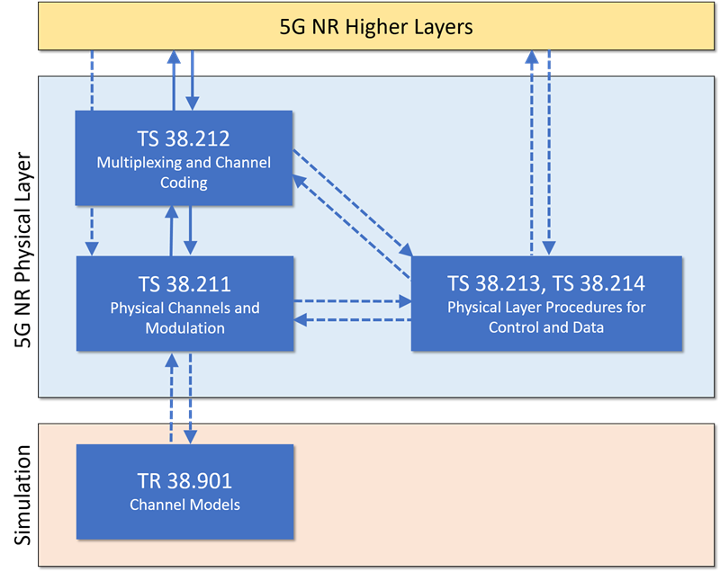What Is 5G New Radio?
New Radio (NR) is the air interface supporting the next generation of mobile communication, commonly referred to as fifth generation or 5G.
The predecessors of 5G NR are GSM, UMTS, and LTE, also referred to as second generation (2G), third generation (3G), and fourth generation (4G) technologies, respectively. GSM primarily enabled voice calls. The redesigned interfaces of UMTS and LTE enabled and gradually improved mobile broadband connectivity with high data rates and high efficiency.
5G NR continues on the path of LTE by enabling much higher data rates and much higher efficiency for mobile broadband. However, as a response to the demands of networked society, the scope of 5G NR goes beyond mobile broadband connectivity. The main requirement of 5G NR is to enable wireless connectivity everywhere, at any time to anyone and anything.
The wide range of use cases that drive 5G NR are classified by three main scenarios.
Enhanced mobile broadband (eMBB) — This scenario is still the most important usage scenario that addresses human-centric communications. eMBB use cases have various challenges. For example, hot spots require higher data rates, higher user density, and a need for high capacity. Wide area coverage stresses mobility and seamless user experience with lower requirements on data rate and user density.
Massive machine type communications (mMTC) — This scenario addresses pure machine-centric use cases characterized by a large number of connected devices. Typically, the data rate requirement of mMTC applications is low. However, the use cases demand a high connection density locally, low cost, and long battery life.
Ultra reliable and low latency communications (URLLC) — This scenario covers both human-centric communication and critical machine-type communication (C-MTC) that demand low latency, reliability, and high availability. Typical URLLC use cases include 3-D gaming, self driving cars, mission-critical applications, remote medical surgery, and wireless control of industrial equipment.
This classification is based on presently foreseen use cases and identifies key capabilities of 5G NR. Based on these capabilities, the 5G NR interface is designed to easily adapt to unforeseen use cases that will evolve and emerge over time.
Scope of 5G Toolbox
The 5G NR specification is developed by the Third Generation Partnership Project (3GPP). The first release of the standard was frozen in mid-2018 as 3GPP 5G NR Release 15.
5G Toolbox™ provides implementations for a subset of the 5G NR physical layer specification and channel model specifications. The following diagram highlights the scope of 5G Toolbox in terms of the addressed specifications and their connectivity.

References
[1] Dalman, E., S. Parkvall, and J. Sköld. 4G, LTE-Advanced Pro and The Road to 5G. Kidlington, Oxford: Academic Press, 2016.
Related Topics
- 5G Toolbox and the 5G NR Protocol Layers
- What Is LTE? (LTE Toolbox)
